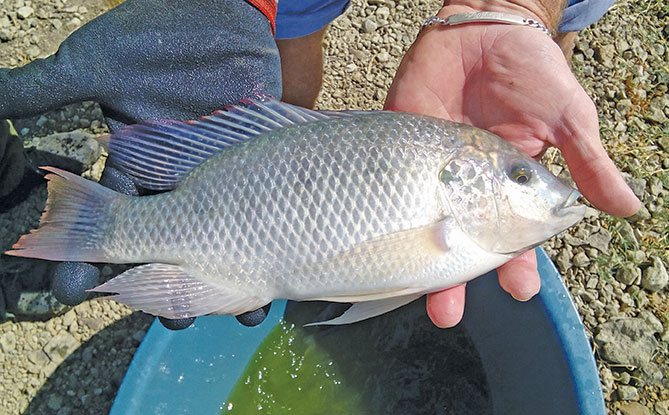Zambia has a considerable wild fishery, thanks to its large lakes and rivers. Unfortunately, the country’s increasing human population has already over-exploited this natural resource and yields are dwindling.
This has resulted in a 50 000t shortfall in national fish demand, which is currently supplied by Asian imports.
The Zambian Fisheries Department has recognised for some time that aquaculture can play an increasing role in making up the shortage, and recently launched the Zambia Aquaculture Enterprise Development Project (ZAEDP) to this end.
More broadly, the programme aims at developing a viable aquaculture subsector in Zambia to promote economic diversification, food security and sustainable employment generation, all of which are central priorities of that country’s government.
The African Development Bank (the prime lender) has made available a loan of US$51 million (about R667 million) to the government of Zambia for the ZAEDP. The project kicked off in 2016, and moves into the operational phase this year.
Public-private cooperation
Historically, new aquaculture projects in Zambia were hindered by a lack of available skills, feed and fingerling availability.
Today, however, the country has at least five professional tilapia feed manufacturers, all competitively producing a range of suitable feeds. This has solved the feed problem.
Fingerlings fall into two categories: Nile tilapia, which are used in the central Kafue/Kariba catchments, and three-spotted tilapia (Oreochromis andersonii) for the western catchments.
The latter species has shown considerable potential for aquaculture use due to its rapid growth and relatively good cold tolerance. Private hatcheries in Zambia currently produce large quantities of fingerlings.
What is noteworthy about the Zambian project is the government’s willingness to harness local private expertise.
Zambia has a range of successful commercial tilapia operations, from cage farms on Lake Kariba to pond farms of various scales, and even a giant raceway culture of tilapia in the north-eastern provinces, so there is no lack of expertise.
Accordingly, the project seeks to work closely with private enterprise, and to use existing aquaculture projects to train new entrepreneurs.
The contrasts with South Africa could not be starker. Zambia has accepted that Nile tilapia are an alien yet valuable resource that the country needs.
Certain catchments in suitable areas have been identified as effectively lost to pure conservation, and here aquaculture using Nile tilapia is promoted.
In areas where alternative high-potential species such as three-spotted tilapia are still unhybridised with Nile tilapia (Western Province, for example), and where the latter has a cultural identity advantage, its use is encouraged.
The Zambian Fisheries Department also works closely with private fish farms. In South Africa, the opposite is the case: the latter are regarded with enmity and suspicion by government departments.
Zambia recognises that its local species need genetic improvement and is taking steps in this direction. It is unsurprising that aquaculture in Zambia is booming, while ours still has so far to go.



